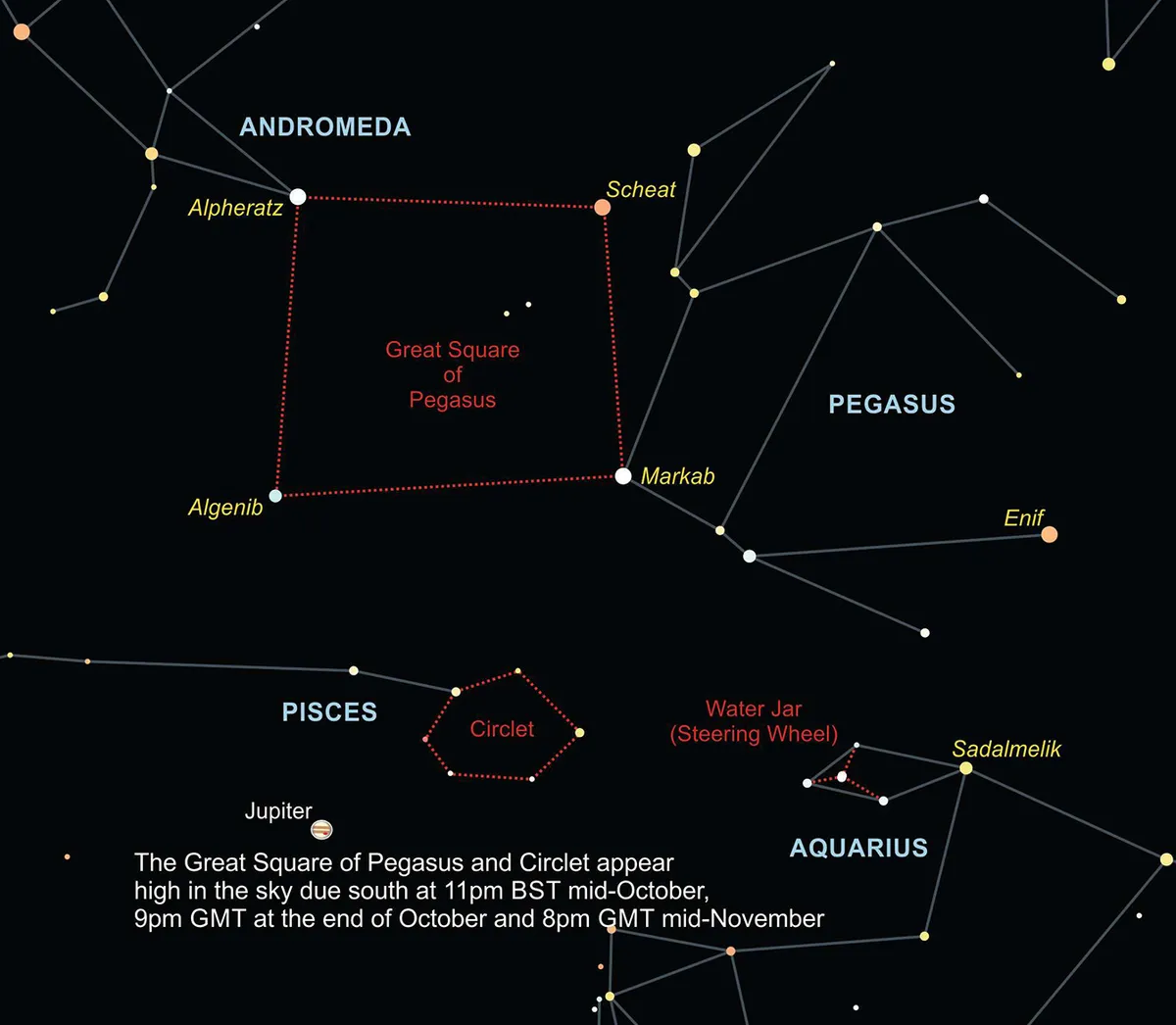The sky is divided into 88 constellationsof varying sizes. The areas are defined and controlled by a body known as the International Astronomical Union (IAU). The stars in each constellation create patterns representing creatures,both real and mythological, as well as inanimate objects.
Asterisms are unofficial patternsdesignedto help navigate the night sky.Anyone can suggest an asterism,but in order for it to stick, it has to become popular. Asterisms can contain stars from multiple or single constellations,and they can be huge or tiny.
Many asterisms are on view at this time of year. The Summer Triangle is a bold favourite formed from three bright stars from different constellations; Vega in Lyra the Lyre, Deneb in Cygnus the Swan and Altair in Aquila the Eagle. This large pattern is visible high, just west (right) of south at 9pm BST on 1 October, 8pm BST mid-month and 6pm GMT at the end of October.

The Summer Triangle is followed across the sky by the Great Square of Pegasus. This is another asterism formed using stars from different constellations,as technically the star Alpheratz in the northeast (upper-left) corner belongs to Andromeda the Chained Princess. The stars forming the square are middle-bright and the roughly square pattern has sides approximately 1.2to1.5 times the width of your clenched fist at arm’slength.
Lookimmediately below the Great Square to find another geometric shape, the Circlet asterism; bright Jupiter currently sits southeast (below-left) of it. This is formed from stars within Pisces the Fish and although not particularly bright, it is distinctive in a dark sky.
Right of the Circlet, is a group of four stars within Aquarius the Water Bearer, one at the centre and three spaced at 120° intervals around it. This is the Water Jar asterism, sometimes known as the Steering Wheel.
Read more:
- Astronomy for beginners: A complete guide for UK stargazing
- How can I see the Winter Triangle?
- How can I see the great conjunction of Jupiter and Saturn?
- How can I see Cancer the Crab?
To submit your questions email us at questions@sciencefocus.com (don't forget to include your name and location)